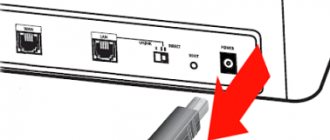Why does it become necessary to reboot your smartphone?
There are several common reasons for this circumstance:
- The phone is frozen. This means that the smartphone became impossible to control after performing a certain action. For example, when a user visited an unverified website on the Internet.
- The need to go to “Recovery” for further steps to configure the smartphone.
- Force closing the application. Some software cannot be closed. To fix the problem, you have to restart your smartphone.
- The automatic restart function of the mobile phone is triggered. This mode can be activated in the device settings. Auto-restart can solve problems with mobile phone performance.
- To improve device performance. For example, the phone has overheated and needs to be restarted to restore the device to its previous functionality.
Ways to reboot your smartphone
You can force a phone restart if it freezes or the screen does not respond by performing several sequential actions:
- Press and hold 3 buttons at the same time: power, volume down, screen activation;
- wait until the system offers the reboot function in the selection menu.
The screen will turn off, and after a short period of time the screen saver will light up, followed by entering the operating mode.
How to reboot a Samsung phone using the standard method
To accomplish this task, you can use the following algorithm:
- Turn on the smartphone by pressing the power button. A desktop with application icons will appear on the device screen.
- Press the power button and hold it for a few seconds. A menu with further actions will be displayed on the mobile phone display.
- Click on the line “Reboot”.
- Wait until the device restarts.
Part 3: Hard Reboot Samsung Galaxy to Clear All Content and Settings
When force restarting Samsung phone doesn't work to fix frozen phone, you can consider hard resetting Samsung Galaxy.
While rebooting Samsung won't erase everything on the phone, a force reboot, also called a factory reset, will erase all content and settings on your phone.
Before doing this, just take a backup of your Samsung Galaxy phone.
Step 1. Press the "Power" button on your phone until the power off screen appears. Then click "Power Off" to turn off your Samsung phone.
Step 2. After the screen turns black, press and hold the hard buttons. When you see the Android logo on the screen, release the hard buttons.
Step 3. When the menu screen appears, highlight the "Wipe Data/Factory Reset" option using the "Volume Down" and "Volume Up" buttons. Then press the Power button and confirm the Yes option to factory reset your Samsung Galaxy phone.
To know more ways to reset Samsung phone, visit here.
Samsung phone frozen - how to reboot with a full reset
During the operation of the gadget, a system failure may occur, which will lead to a complete freeze of the device. This problem is especially acute for smartphones with a non-removable battery, because... I can't turn them off. In this situation, experienced specialists recommend resetting the gadget during reboot. This procedure involves performing simple steps:
- Press and hold the Power and Volume Down buttons at the same time for 10 seconds. The phone will reboot and the “Recovery” menu will appear on the touchscreen.
- Click on the item “Wipe data/factory reset” (see figure above). Switching through the “Recovery” menu items is done using the phone volume button up and down, respectively.
- Confirm the action by pressing the Power key. The process of resetting the gadget’s settings will begin, after which you will need to tap on the “Reboot System Now” line to restart the smartphone.
Hard reset via menu
If you have access to the settings, you can reset through the menu. For this:
- Go to Settings.
- Go to Data Archiving and Reset.
- Select Reset data and then reset.
- Confirm the action. After deleting the files, the device will reboot itself.
Resetting a Samsung mobile phone involves deleting user information from the device.
What to do if your Samsung Galaxy freezes? 6 tips
As noted, there are many reasons why Samsung phones may freeze. However, using the tips described below, you can solve this problem. They can be considered as guidelines that need to be kept in mind when using the phone every day.
Remove unnecessary and heavy applications
Heavy apps take up most of your phone's memory, eating up free space and making the processor work harder. Many users have a habit of installing unnecessary applications. Make sure that you remove all such applications, thus freeing up additional space and making your system easier to operate.
For this:
1. Open the Settings menu and find the “Application Manager” or “Apps” section.
2. Select the application you want to remove.
3. To uninstall, find and click “Uninstall” in the list of options.
On some smartphone models, you can remove heavy applications directly from the Home Screen or from the Google Play Store.
How to enable safe mode on Samsung with two buttons?
There is no guarantee that your phone will boot 100% in safe mode, since the only difference between this mode and normal mode is that third-party applications do not load or are temporarily disabled.
The point of this procedure is to confirm that third-party applications have something to do with the freezing issue. If this is the case, then when loading in normal mode the phone may freeze again. To boot your phone in safe mode, do the following:
1. Press and hold the power off button.
2. When the Samsung logo appears, release the button and immediately press and hold the Volume Down key until the reboot completes.
3. When “Safe mode” appears on the screen, release the Volume Down key.
If your device boots up, then the next thing you need to do is identify the application that is causing problems with your phone.
Clear cache and remove suspicious applications on Samsung
I know this is easier said than done. However, if there are applications on your phone that may be causing it to freeze, try resetting them one by one, clearing the cache and deleting data. If this method did not work, then I would advise removing the applications.
Here's how to clear cache on Samsung:
- From the Home screen, select the Apps icon.
- Go to Settings.
- Select Applications and Application manager.
- Display a general list of applications.
- Find and click on the name of the suspicious application.
- Force close the application by clicking the appropriate button.
- Select "Storage".
- Clear the cache and data by clicking Clear and Clear data.
If you have hundreds of apps installed on your phone and you don't know which ones might be causing the lag, then you should first back up your data (especially photos and videos) and then do a reset in the settings menu.
Here's how to reset your Samsung:
- From the Home screen, select the Apps icon.
- Go to Settings, then select Backup and reset.
- Click on the “Factory data reset” button, and then “Reset device”.
- If your phone has security enabled for this feature, enter your password or PIN.
- Click Continue.
- Confirm your actions by selecting “Delete all”.
Read more detailed instructions: how to reset Samsung to factory settings?
Clean partitions to refresh the system cache
After the update, you could clear the cache created when running uninstalled applications. However, the remaining applications continue to use it, and this can prevent the device from booting normally. Now you will learn how to update the cache.
Follow this step if you were unable to boot into Safe Mode, deleting apps did not have any effect and your phone may boot into Recovery Mode.
- Turn off your phone.
- Press and hold the Home and Volume Up buttons, then press and hold the Power Off button.
- When the Samsung logo appears on the screen, release the Power button while continuing to hold the rest.
- Once the Android logo appears, you can release both buttons. Leave the phone for 30-60 sec.
- Using the Volume Down button to navigate to the menu, find the “Wipe cache partition” option.
- To select, press the power off button.
- Find the Yes option and select it using the Volume Down and Power keys.
- Wait until the cache partitions are cleared. Once completed, select “Reboot system now” and press the Power key.
- The phone will take longer to boot than usual.
If this procedure does not help, then there is no other option but to reboot the device.
How to reboot a Samsung phone via Recovery
This issue was partially discussed in the previous paragraph. However, to fully understand the user will need to familiarize themselves with the algorithm:
- Press and hold the phone's power key located on the side of the case.
- In the menu that appears, click on the “Turn off” line.
- Wait until the smartphone turns off.
- Press and hold the power and volume down buttons on your Samsung phone at the same time. The device will start to turn on and the “Recovery” environment will appear on the screen.
- Use the volume key to switch to the “Reboot system now” option and click OK. The power button is responsible for confirming the action.
Before clicking on the “Reboot system now” line, you need to perform a number of specific actions in the “Recovery” menu.
Option #3. Flashing
The third method is the most radical, but it is definitely worth using if the phone suddenly turns off, does not turn on, or freezes. We act according to simple logic - if the system cannot be restored, then it should be replaced. In the case of computers and laptops, we usually reinstall the operating system, and for phones, changing the firmware works.
First, download the firmware to your computer, and then transfer it to the memory card installed in the phone. The firmware is downloaded as an archive, and there is no need to extract files from it. We throw it on the map exactly in this form.
Now we go to Recovery in exactly the same way as in the previous case, that is, by holding down the power and volume buttons. If there are installation files on the memory card, the system will recognize them and offer you the following option: install zip from sdcard. This is exactly what we need if the phone turns off and we need to change the firmware. We confirm the actions by starting to download the file.
Typically flashing takes a few minutes. Don't be alarmed if your phone turns off during this process - this is quite normal. It can reboot, and repeatedly. And this is not a cause for concern.
After several reboots, the system will turn on, and, most likely, you will no longer see freezes and slowdowns. This means that the problem is a thing of the past, and now you know how to turn on a phone that has started to slow down or does not turn on.
How to set up automatic reboot for Samsung
The process of completing the task depends on the specific Samsung phone model. The names of the sections responsible for activating a particular function may differ.
Automatic reboot is a spontaneous restart of a Samsung device under certain circumstances. For example, the phone may reboot at night when it is not used for a long time. This function was introduced by the developers to improve the performance of the gadget. It can be activated as follows:
- Open the smartphone settings menu by clicking on the gear icon on the desktop.
- Go to the “Advanced system settings” section.
- At the end of the list, find the “Reset” item and click on it.
- Set up the restart function. In this window, the user will be able to set their own parameters for restarting the operating system of the device. For example, set the time or date when the function was enabled. You can also experiment with the battery settings. On Samsung devices, you can activate reboot mode when the battery is low. This feature has been added to save energy. Also in the phone settings, the user will be able to set the frequency of restarting the gadget.
Note! The auto-restart function is not entirely convenient. For example, a smartphone may reboot at an inopportune moment.
Possible problems
The Samsung A50 is a relatively new model, and despite the careful development of hardware and software, failures occur regularly. Some of them are temporary, for example, rapid battery drain or difficulties with fingerprint recognition.
Another category of malfunctions includes mechanical damage or uncontrolled memory filling. Android, and even Apple products, very often like to crash after the “crooked” installation of the latest update. Sometimes you even have to contact a service center to resuscitate your mobile device.
In any case, if the described instructions do not lead to the expected result, it means that the smartphone has a more serious malfunction that cannot be corrected by manipulating the screen or control buttons alone.
If the device does not restart
Sometimes the gadget cannot be rebooted or turned off using any of the above methods. In this case, you need to remove the battery.
On models with non-removable batteries, to remove them you will need to disassemble the Samsung device by unscrewing several screws. More detailed information on this issue can be found here
If the smartphone is frozen and you cannot perform any actions on it, then removing the battery will also help solve this problem. When removing the battery of a Samsung smartphone, it is important not to lose anything, because... The screws are quite small in size. It is better to unscrew them with a special set of screwdrivers.
Vyacheslav
For several years he worked in mobile phone stores of two large operators. I understand tariffs well and see all the pitfalls. I love gadgets, especially Android ones.
Ask a Question
Question to the expert
Is it possible to reboot a Samsung phone in a non-standard way?
Such a reboot is possible. To do this, you need to either remove the battery from the gadget, or go to the Recovery menu, and from there perform further actions. The second restart method is considered the safest.
I decided to delete all information from my Samsung Galaxy A30 phone in order to sell it in the future. Can I reset my device without going to the Recovery menu?
Of course, such a procedure is possible. To reset your phone to factory settings, you will have to go to the device settings, and then go to the “Restore and reset” tab. Next, you need to click on the “Reset settings” line, agree to the system warning about deleting information and confirm the action. The reset procedure may take several minutes, so be patient.
What happens if the phone is completely discharged during a reset?
I highly recommend not allowing this situation to happen. Otherwise, the gadget will not be able to turn on on its own and will have to be reflashed at a service center. However, many phones have protection against this action. Before performing a reset, the operating system should warn you that the battery level is less than 50 percent. In this case, further ones will be possible only after recharging the smartphone.
Tell me what to do? I rebooted my Samsung Galaxy A50 device and now it won’t turn on. When I turn it on, it loads endlessly and I can't get to the desktop.
In this situation, I recommend removing the battery, because... Most likely there was a system failure. The next time you turn on your phone, go to the Recovery menu and try to reboot from there. To go to Recovery, you need to hold down the power button and the volume rocker down.
What to do if your Samsung phone keeps rebooting?
Most likely, you have activated auto-reboot mode in your smartphone settings. Disable it and the problem will go away. If it doesn’t help, then you should reflash the device. However, I do not recommend doing this yourself.
Option 1
1. First, turn off the gadget 2. Press Volume (+)
+
Power on
Volume Setting
buttons and confirm by pressing
Power
button 6. At the end, to complete the reset and reboot process, click reboot system now
7. The reset process is completed after the phone reboots
Option 2
1. Open Phone Settings
2. Next item Recovery and reset
3. Then select Reset settings
4. Click the Reset button and agree to the destruction of personal information 5. After the gadget restarts, the reset process can be considered complete
Samsung Galaxy J5 Prime factory reset
Attention!
- Images or videos for some operations may not match your phone model.
- When the factory reset is completed, all personal data and applications installed in the internal memory will be destroyed.
- In order for a full reset to be completed, the battery must be charged to approximately 80%.
In the “distant” times, when almost every Samsung smartphone had a collapsible case, you could easily remove the back panel by removing the battery to quickly reboot the smartphone, eliminating problems with its unexpected freezing.
But the latest flagships have a completely different design - they cannot be disassembled. At least, in the case of the Galaxy S8 and Galaxy S8 Plus, this is exactly what happens. And the most annoying thing is that there were still errors and freezes.
The first thing to do if your device does not respond to touch touches is...
Press and hold the power button – and not for a few seconds, as users do to turn off the device, but for at least 10-15 seconds.
Unfortunately, this method does not always help. If the S8 does not respond to touches of the sensor, then it is quite possible that when you press the power button, it will not receive the information that you need to complete the task of turning off the smartphone.
If this is your case, then you can solve the problem using a special key combination. This combination can replace the usual procedure for rebooting a mobile device.
In 99% of cases, the combination really helps solve the problem. And it doesn’t matter if the smartphone froze while you were working with its standard menu, playing a game or using an application. Any failure, any error that causes the device to freeze must be corrected with the help of such a reboot.
There is another “popular” advice to get rid of freezing and force a reboot of the device, which was sent to us by the happy owner of a Galaxy S8.
As you can see, sometimes it is necessary to use such “drastic” measures. But the main thing is that it works!
Finally, here's a point. If at the moment of freezing you were working with some program, and after rebooting it, launching this software again, the smartphone began to “glitch” again, it is quite possible that the problem is in the software product. Most likely, it will have to be removed. It is better to do this - this way, the chance that a “buggy” application will not leave any “tails” behind after removal increases.
In this article, we have provided a quick guide on how to reboot your Android phone. It's pretty simple, but there are a few things worth knowing.
When a smartphone refuses to obey, the first step to restoring access is to try to reboot. Fortunately, the Android system itself and smartphone manufacturers do not prevent this action.
By
Is it worth restarting your smartphone if it cannot go into reboot?
If, after clicking the “Restart” button, nothing happens on your Samsung mobile phone, then most likely the problem is in the operating system.
It is recommended to update the system according to the following scheme:
- Connect to mobile internet or Wi-Fi.
- Open gadget settings.
- Click on the line “About phone”.
- Click on the System Update tab. The search for updates will begin.
- If a corresponding update is found, download it following the instructions of the assistant. It is important that the device is charged to at least 50 percent.
Developers regularly release updates for Samsung phones, which fix existing problems and errors in the operating system and improve the overall performance of the device. Therefore, it is recommended to check for updates.
4.8 / 5 ( 24 voices)











